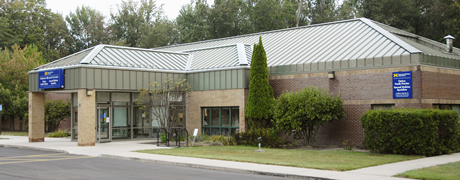 Unknown
at
Sunday, June 24, 2012
Unknown
at
Sunday, June 24, 2012
Good Evening to everyone,
I've been trying to find a time to share with you my experience with you as an ambulatory care pharmacist and due to how extremely busy I was during rotation 1, I find that I am doing this the night before rotation 2. haha Without further ado- here we go:
I had the wonderful opportunity of working with Dr. Shimp and Dr. Tingen at four different UMHS associated health centers.
Mondays from 1:00PM to 6:00 PM I was at the Chelsea Health Center
Tuesday from 8:00PM to 5:00 PM-Livonia Health Center
Wednesday 1:00-6:00PM-Saline Health Center
And Thursday various times-Ypsilanti Health Center
I really enjoyed this as it allowed me to see a wide variety of varying patient populations.
As an Am-Care pharmacist at these locations we focused on three disease states: hypertension, hyperlipidemia, and diabetes. Patients would be referred to the PharmD by their primary care physicians as people who would benefit from added disease management. Within the collaborative practice agreement between the pharmacist and physician, the pharmacist has the ability to start and stop medications, order labs, and various other clinical responsibilities.
My daily schedule looked like this at the clinic:
- Work up and discuss the days patients with my preceptor: 15-60min
- We would go over pertinent labs, discuss possible therapy changes, and address what needed to be done when the patient showed up
- Patient interaction: 15-20min * 5-12 patients/day
- When the patient's arrived we would go over over their lifestyle (diet, exercise, caffeine intake, pain, smoking status), Blood glucose monitoring, home blood pressure monitoring, adherence to their medication regimen, and any other topics that they wanted to address at today's visit. I would also manually check their blood pressure with a sphygmomanometer and stethoscope.
- Therapy Decision: 10min * 3-12 patients/day
- After discussing with the patient and taking their blood pressure we would then assess patient's willingness to make necessary therapy changes. This happened a lot and really helped me hammer home how certain medications are used and when to use them.
- Pharmacy Notes
- Documentation of the day's patient interactions. Generally I would finish these at home
On top of my clinic duties I would complete/work-on various projects for my preceptors. As you may be able to see I was extremely busy, but I would rather be busy than doing nothing.
I came into the my first rotation being very open to what ambulatory care had to offer. I find that this mindset aided me greatly and found that I enjoy ambulatory care immensely. Until next time
Next Up: Critical Care at UM Hospital





No comments:
Post a Comment